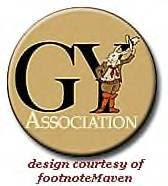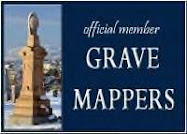- Altar tomb -A solid, rectangular, raised tomb or gravemarker resembling ceremonial altars of classical antiquity and Judeo-Christian ritual.
- Bevel marker -A rectangular gravemarker, set low to the ground, having straight sides and uppermost, inscribed surface raked at a low angle.
- Burial ground -Also "burying ground;" same as "graveyard" (see below).
- Burial cache- A place of concealment for burial remains and objects.
- Burial mound -A mass of earth, and sometimes stone or timber, erected to protect burial chambers for the dead.
- Burial site -A place for disposal of burial remains, including various forms of encasement and platform burials that are not excavated in the ground or enclosed by mounded earth.
- Cairn- A mound of stones marking a burial place.
- Cemetery -An area set aside for burial of the dead; in Latin American culture known as "campo santo," or holy field.
- Cenotaph -A monument, usually of imposing scale, erected to commemorate one whose burial remains are at a separate location; literally "empty tomb."
- Chapel -A place of worship or meditation in a cemetery or mausoleum, either a freestanding building or a room set apart for commemorative services.
- Chest marker A solid, rectangular, raised gravemarker resembling a chest or box-like sarcophagus.
- Cinerary urn A receptacle for cremation remains, or ashes, in the shape of a vase.
- Columbarium A vault or structure for storage of cinerary urns.
- Crematorium A furnace for incineration of the dead; also crematory.
- Cremation area An area where ashes of the cremated dead are scattered or contained.
- Crypt An enclosure for a casket in a mausoleum or underground chamber, as beneath a church.
- Epitaph An inscription on a gravemarker identifying and/or commemorating the dead.
- Exedra A permanent open air masonry bench with high back, usually semicircular in plan, patterned after the porches or alcoves of classical antiquity where philosophical discussions were held; in cemeteries, used as an element of landscape design and as a type of tomb monument.
- Family cemetery A small, private burial place for members of the immediate or extended family; typically found in rural areas, and often, but not always, near a residence; different from a family plot, which is an area reserved for family members within a larger cemetery.
- Flush marker A flat, rectangular gravemarker set flush with the lawn or surface of the ground.
- Gatehouse A building at the main entrance to a cemetery that is controlled by a gate; a shelter or habitation for the gate keeper.
- Grave A place or receptacle for burial.
- Gravemarker A sign or marker of a burial place, variously inscribed and decorated in commemoration of the dead.
- Graveyard An area set aside for burial of the dead; a common burying ground of a church or community.
- Grave shelter A rectangular, roofed structure usually of wood, covering a gravesite, enclosed by boards or slats or supported by poles; in tribal custom used to contain burial offerings and shelter the spirit of the dead; also grave house.
- Headstone An upright stone marker placed at the head of the deceased; usually inscribed with demographic information, epitaphs, or both; sometimes decorated with a carved motif.
- Interment A burial; the act of committing the dead to a grave.
- Ledger A large rectangular gravemarker usually of stone, set parallel with the ground to cover the grave opening or grave surface.
- Lych gate Traditionally, a roofed gateway to a church graveyard under which a funeral casket was placed before burial; also lich gate; commonly, an ornamental cemetery gateway.
- Mausoleum A monumental building or structure for burial of the dead above ground; a "community" mausoleum is one that accommodates a great number of burials.
- Memorial park A cemetery of the 20th century cared for in perpetuity by a business or nonprofit corporation; generally characterized by open expanses of greensward with either flush or other regulated gravemarkers; in the last half of the 19th century, those with flush markers were called "lawn" cemeteries.
- Military cemetery A burial ground established for war casualties, veterans, and eligible dependents. Those established by the Federal government include national cemeteries, post cemeteries, soldiers' lots, Confederate and Union plots, and American cemeteries in foreign countries. Many States also have established cemeteries for veterans.
- Monument A structure or substantial gravemarker erected as a memorial at a place of burial.
- Monolith A large, vertical stone gravemarker having no base or cap.
- Mortuary A place for preparation of the dead prior to burial or cremation.
- National cemetery One of 130 burial grounds established by the Congress of the United States since 1862 for interment of armed forces servicemen and women whose last service ended honorably. Presently, the Department of Veterans Affairs maintains 114, the National Park Service (Department of the Interior) administers 14, and the Department of the Army has responsibility for two.
- Obelisk A four-sided, tapering shaft having a pyramidal point; a gravemarker type popularized by romantic taste for classical imagery.
- Ossuary A receptacle for the bones of the dead.
- Peristyle A colonnade surrounding the exterior of a building, such as a mausoleum, or a range of columns supporting an entablature (a beam) that stands free to define an outdoor alcove or open space.
- Pet cemetery An area set aside for burial of cherished animals.
- Potter's field A place for the burial of indigent or anonymous persons. The term comes from a Biblical reference: Matthew 27.7.
- Receiving tomb A vault where the dead may be held until a final burial place is prepared; also receiving vault.
- Rostrum A permanent open air masonry stage used for memorial services in cemeteries of the modern period, patterned after the platform for public orators used in ancient Rome.
- "Rural" cemetery A burial place characterized by spacious landscaped grounds and romantic commemorative monuments established in a rural setting in the period of the young republic and at the dawn of the Victoria era; so called for the movement inspired by the American model, Mount Auburn Cemetery (1831) in the environs of Boston; a cemetery developed in this tradition.
- Sarcophagus A stone coffin or monumental chamber for a casket.
- Screen memorial A vertically-set gravemarker consisting of a tablet with wing elements resting on a continuous base.
- Sepulcher A burial vault or crypt.
- Sexton Traditionally, a digger of graves and supervisor of burials in the churchyard; commonly, a cemetery superintendent.
- Shelter house A pavilion or roofed structure, frequently open at the sides, containing seats or benches for the convenience of those seeking a place to rest; erected in rustic and classical styles to beautify a cemetery landscape.
- Slant marker A rectangular gravemarker having straight sides and inscribed surface raked at an acute angle.
- Stele An upright stone or commemorative slab, commonly inscribed or embellished on one of the broader vertical surfaces; a gravemarker type revived from classical antiquity.
- Table marker A rectangular grave covering consisting of a horizontal stone slab raised on legs, which sometimes are highly elaborate; also "table stone."
- Tablet A rectangular gravemarker set at a right angle to the ground, having inscriptions, raised lettering or carved decoration predominantly on vertical planes, and top surface finished in straight, pedimented, round, oval, or serpentine fashion.
- Tomb A burial place for the dead.
- Tomb recess A niche or hollow in a wall that shelters a tomb.
- Tumulus A mound of earth protecting a tomb chamber; in the ancient world, important tumuli were encircled by drum-like constructions of stone.
- Vault A burial chamber, commonly underground.
All Photos by Angela L MSSPI
Glossary definitions courtesy of: U.S. Department of the Interior, National Park Service


















I am so glad to see this post.
ReplyDeleteBronze Memorial Plaques
Cemetery Markers